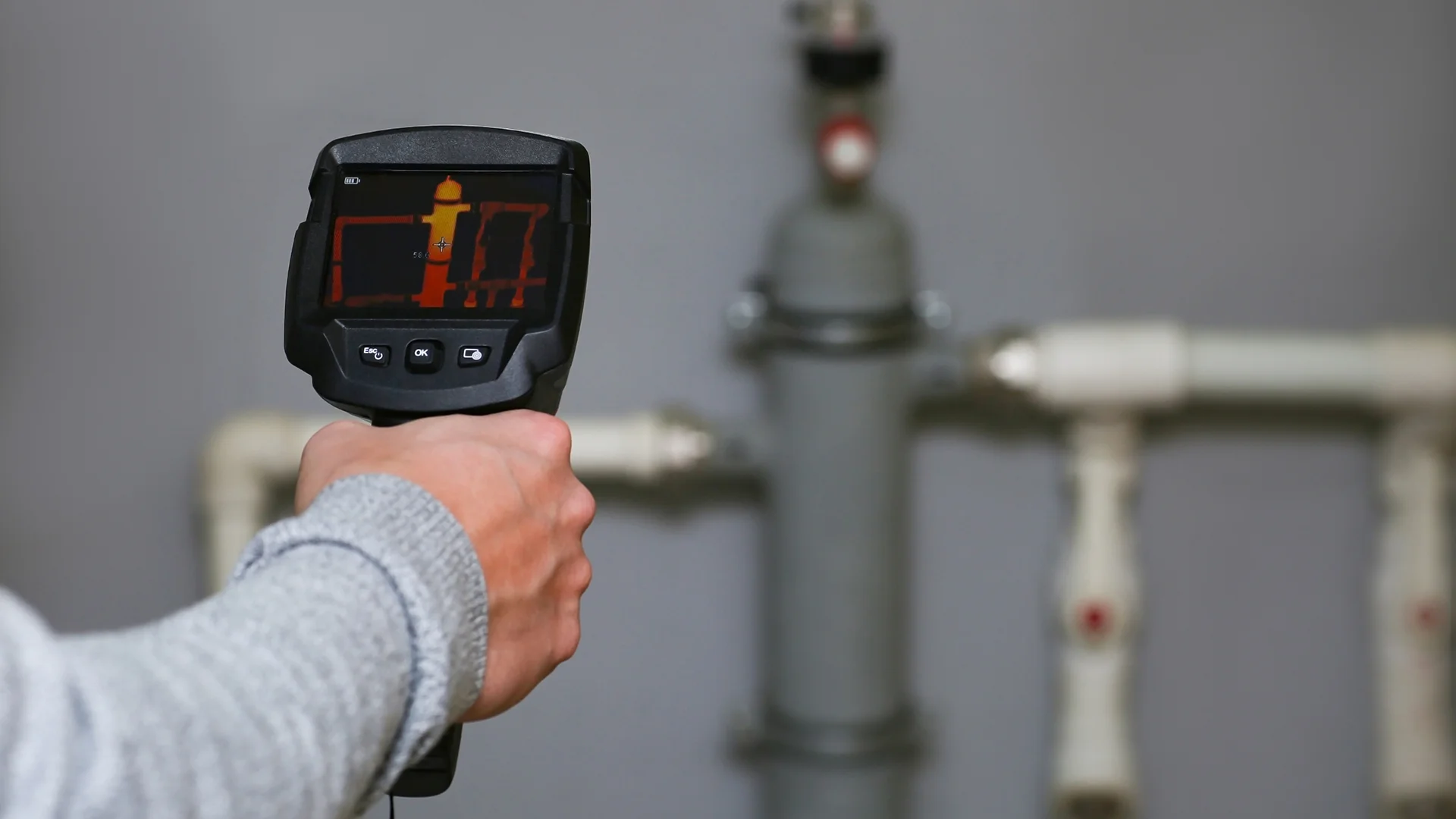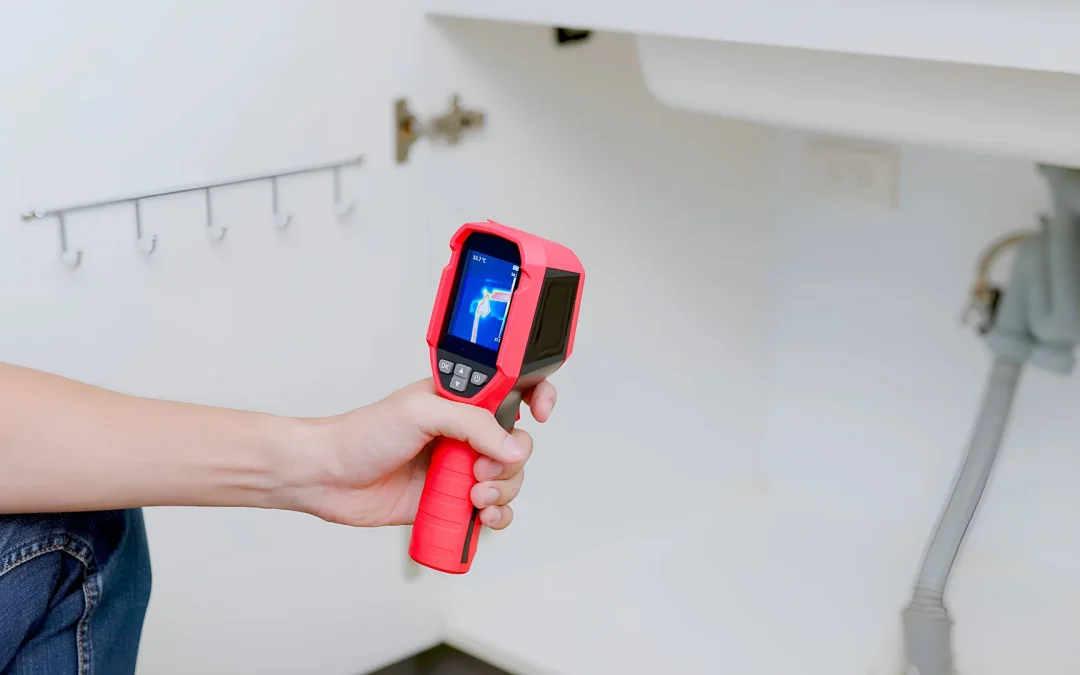Water leaks love to hide—and they don’t care if your home is brand new or 20 years old. They are common in fast-growing neighborhoods with a mixture of new and old homes. A thermal imaging camera for water leak detection can help you spot trouble early—before that hidden drip becomes a major (and expensive) problem.
Infrared thermal imaging inspection is often the first line of defense—it shows you where to start looking. It helps to narrow down the source, avoid unnecessary wall demolition, and prevent costly damage before it worsens.
Can Thermal Cameras Detect All Types of Water Leaks?
Thermal imaging cameras detect temperature changes, not moisture. They show cool patches behind walls, ceilings, or floors where water might collect. They also highlight heat loss patterns that can reveal air leaks or missing insulation.
These cameras are great for spotting red flags like:
- Wet drywall or insulation
- Cold spots around plumbing or the roofline
- Surface patterns that look like water seepage or leaks
But here’s the catch: thermal imaging alone doesn’t confirm a leak.
Since they don’t detect water directly, they can miss deep underground leaks without a change in surface temperature. That’s why it’s important to bring in a trained professional who knows how to read the scan and what to do next.
Thermal Imaging vs. Traditional Leak Detection Method: What’s the Difference?
Traditional water leak detection involves visual inspections for water stains, mold, moisture meters, or probes pressed into the walls. Technicians may need to cut into drywall or flooring to trace the leak’s location.
Traditional leak detection often relies on guesswork and physical access, requiring inspectors to remove parts of walls or conduct invasive searches.
A thermal imaging inspection uses an infrared camera to scan walls, ceilings, and floors for temperature changes—no holes or demo required.
It’s fast, non-invasive, and helps catch hidden issues before become big repairs. It also pairs well with moisture meters, which provide added confirmation.

What is the Cost-Effectiveness of Thermal Imaging for Homeowners?
Thermal imaging catches problems early. If caught early, a small leak might cost $100–$300, but if left unmonitored, it can increase to $5,000–$10,000. A thermal imaging camera helps avoid costly repairs like mold cleanup, wood rot treatment, drywall fixes, and flooring replacement.
Many high-quality home inspections now include thermal imaging to catch leaks and moisture issues early. Catching these issues increases the home’s long-term value and avoids costly repairs.
How Accurate are Thermal Imaging Cameras for Water Leaks?
Thermal imaging cameras are accurate when used by a trained inspector, but are not always foolproof. Because thermal cameras rely on surface temperature, many factors can affect accuracy.
Wet areas often appear cooler than surrounding dry material, but if there is no surface temperature contrast, it may not be detected. Only a trained inspector can tell the difference between a real leak and an air draft or insulation gap.
Other tools, such as moisture meters, are often used to verify water leaks. Thermal cameras highlight areas of concern, but inspectors usually verify results with different tools to confirm an actual leak.
How to Hire a Professional with Thermal Imaging for Leak Protection
Infrared thermal imaging inspection is included with every home inspection from Kissee Inspection Services. Our trained pros use this advanced technology precisely, so you get accurate results and real answers.
If you’re searching for a “home inspector near me,” trust Kissee to deliver more than just a report—we help protect your investment.
We don’t just find the issue—we explain what it means for your home’s safety, structure, and long-term value.




